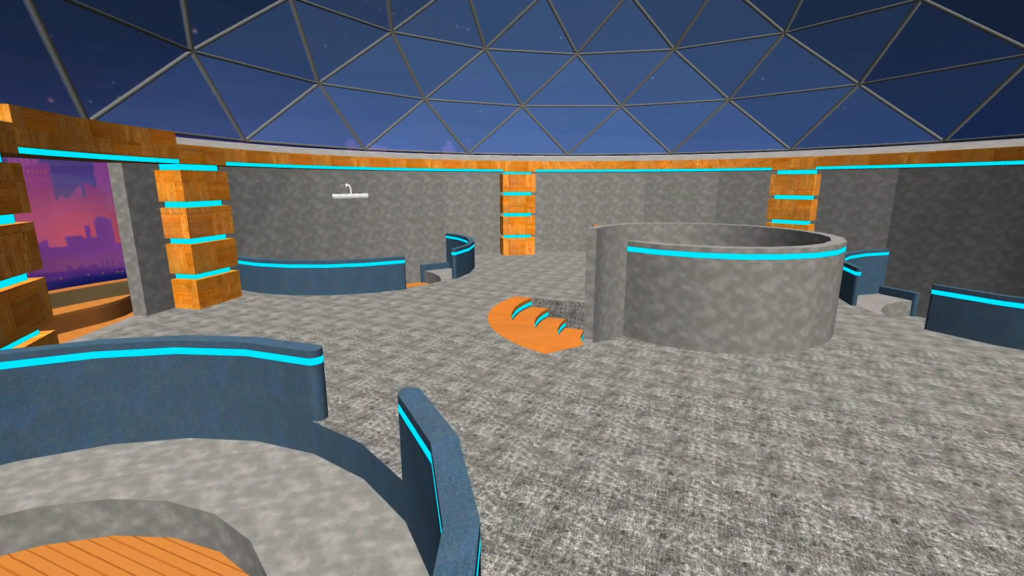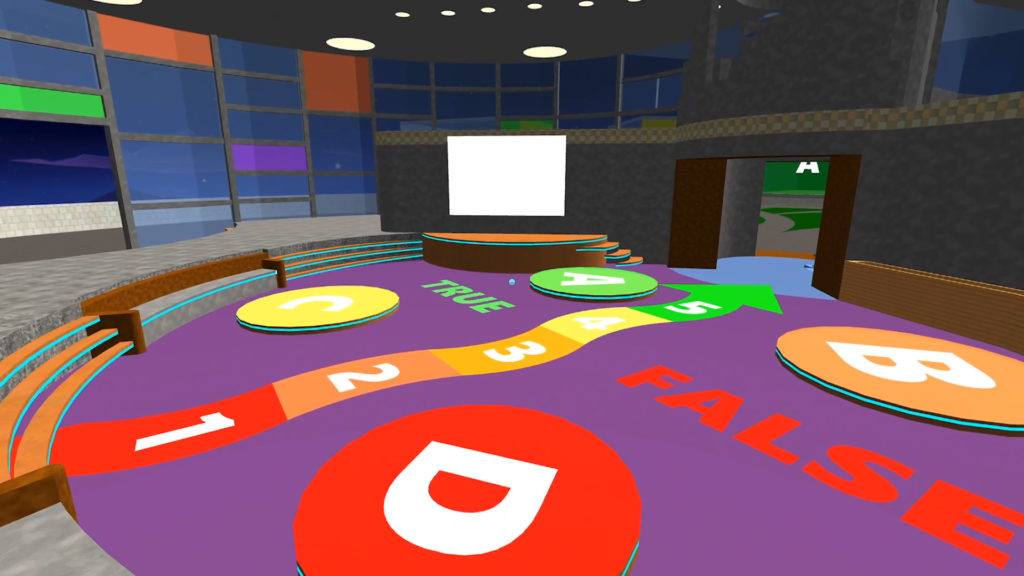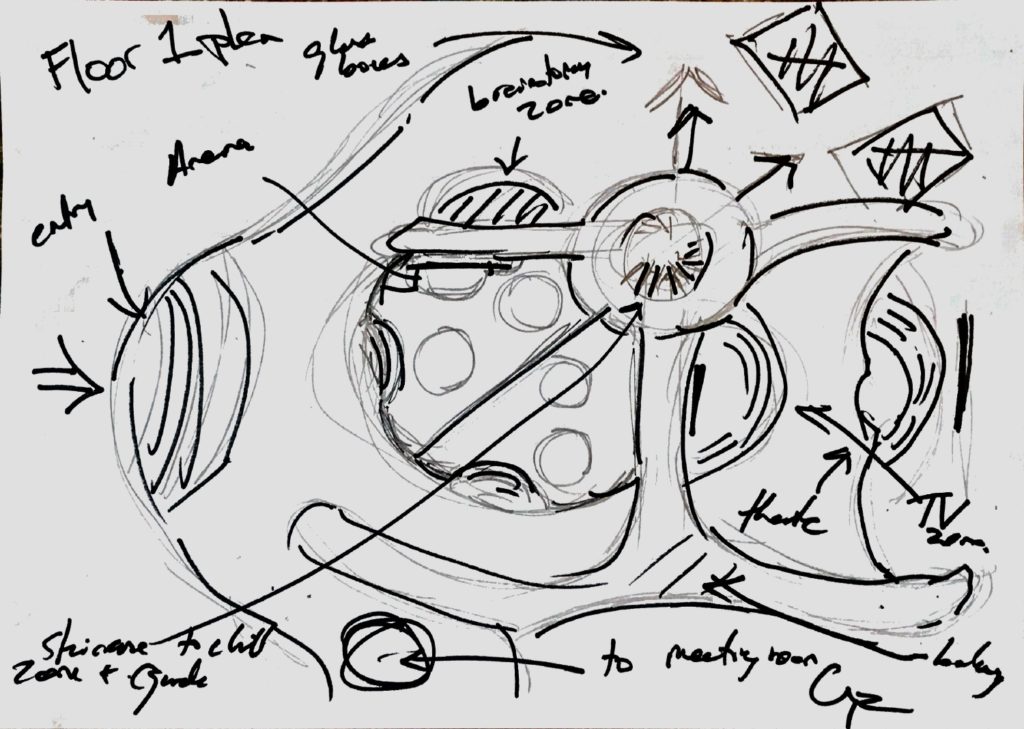Virtual School Research
As architects, we need to understand the broad ranging requirements for delivery of the curriculum, whilst challenging the most appropriate types of spaces for each subject. The building should create opportunities for teachers to present and deliver in the optimum environment, with a view to refining, rather than defining the space for learning.
Learning in a less sterile space with good lighting and less formal furniture is much more conducive to learning in a more everyday life like environment – like a good coffee shop.
Hence the virtual school/space has the following key features of the design: an open plan layout to enable seamless transition between activities, semi-circular paired/group-work spaces to support collaboration, vertical work surfaces to encourage display and reflection on work-in-progress, etc.
“The open-plan classroom allows for as wide a variety of group learning sizes as possible and have learner groupings from an entire “family” of 30 or 40 learners, to groups of 12, 4-6 and 1-2 learners.”
A comparative study (Figure 25), which was carried out in Manchester, has shown that the shared activity area here makes the teaching situation flexible and the teachers can have breakout groups anytime”.
Lippman (2002, 2003) in his study of schools mentions that providing a variety of spaces within a classroom supports student-teacher relationships.
The impact of environmental colour on learning capacity, a 3-year study among children (Henner 1973, Reported by Birren) found that the more popular colours were light blue, yellow, yellow green and orange. The use of these colours could raise IQ by as much as 12 points over environments where colours considered ugly – white, black and brown – were used.
http://usir.salford.ac.uk/id/eprint/18471/1/SCRI_Report_2_school_design.pdf
The 3D VR-aided learning allows learners to transcend the limitations of physicality, e.g. location, individual physical abilities, or safety concerns.
VR-aided learning also has a potential to positively impact the society, by responding to the need for life-long learning, attenuating learning barriers, and reducing costs of attaining educational goals. VR-aided learning directly supports equitable access and diversity by enabling disadvantaged groups to take full advantage of learning opportunities that may be otherwise inaccessible to them.
To support that claim, we designed a virtual school and implement a scenario when the teacher and the remote students immerse in in and T&L takes place.
The remote student joins the class by starting VR application and using a class-unique code provided by the teacher. Once connected, the student participates in the class.
The interaction between an instructor and a remote student is facilitated beyond voice as the space is equipped with interactive whiteboards, which allow…
The user responses to the system were overly positive. Users pointed out that the interaction with an avatar of a teacher is more interesting than a voice or video conference connection.











